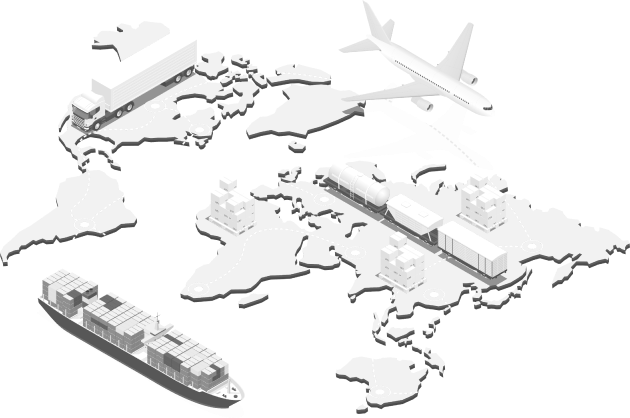The worldwide seafood market is expected to grow to become nearly a US$200 billion industry within the next six to seven years. By the numbers alone, the scope of this market is simply massive – and very encouraging for Prime Fresh Handling (PFH).
As a growing force in the global perishables shipping end of the business, what it means is PFH has got a boatload of work ahead in helping fisheries, forwarders, wholesalers, and restaurants get their product to market.
Proportionate to its volume of production, the seafood delivery network is expansive and intricately spread all across the world. Difficult weather and environmental conditions, shortages in global shipping capacity, coupled with fluctuating volumes of supply make seafood logistics especially challenging.
“We know that logistics support in the market of seafood must be efficient and agile enough to be able to quickly respond to changing situations without compromising the quality of the product,” PFH General Manager-West Coast Cristina Moscoso. “In fact, with over 20 years in the business, this is where we excel.”
The complexities involved in seafood logistics demand such specialized attention to consistently deliver the material reliably and on time. That is why the mark of a successful perishables logistics provider is its ability to offer optimal solutions to the client each time under varying scenarios. These scenarios continually change based on the nature of the freight and the time frame required – which requires great agility and innovative solutions.
So what exactly are these complexities? What are the challenges facing the seafood industry and the logistics providers that support it? Let’s start where it all starts – well before PFH even enters the picture – on the high seas.
Fluctuations in the Fishing Industry
There are myriad moving parts to the fishing industry – starting with challenges that are driven by multiple seasons for the vast varieties of fish, fluctuating volumes of product year over year, and the wide range of source locations.
Assumptions based on previous-year trends can wrongly set in place fishing vessels and requisite logistics support for an area where there was a historically abundant supply of product. There is always a chance that during that specific year the volume of fish available in that area would actually drop. It would require the fishing companies to quickly shift their attention to other areas where the supply-volume is high. Such fluctuations could result in losses. The efficiency of provider operations rests on their capability to plan effectively in such situations.
Lack of Vessel Data Capture
Some seafood procurement operations suffer from a lack of record keeping and a less than robust mechanisms to ascertain where, when, how, by whom, and what was caught by each vessel. This results in lapses in resource management. These records are extremely essential to determining the sustainability and legality of a product, as well as stock health. Data pertaining to the sustainability and health of the stock dictate how quickly it needs to be delivered and by what means. To tackle these issues, the mid-chain supplier should always demand records on catch origin along with the conventional logbook that captures information on the total weight, price, and species.
Unsorted Aggregation Of Supply
Many times, the combination of product originating from different fishing events into a single volume also thwarts the efforts to determine the catch origin, catch method, date of harvest, size composition, and other types of data pertaining to fishing. This issue happens early in the logistics chain – on the deck of the fishing vessel to be precise.
To optimally use the limited space available, carriers will more often compromise with the quality of the seafood. They stack the seafood according to their size when it should be done based on the product of the fish, the day it was caught, and the process by which it was harvested. Unchecked aggregation of seafood only to accommodate them on the vessel most profitably works counter to any reliable effort towards responsible storage.
Lack of Traceability
Once the material has been properly stored in the vessel, keeping track of it is a major challenge. Traceability has become more prominent in the past few years, owing to the increased media attention on the legal and social risks associated with some of the seafood supply chains. Governments across the world have also introduced stringent traceability requirements for seafood logistics providers. In addition, private logistics companies have become increasingly keen to comply with the necessary sustainability protocols.
Moreover, many suppliers these days are offering customers the benefits of tracking their products in real-time from source to shop. A number of the smaller players in the field often fail to comply with such traceability requirements –as it requires investments in vessel monitoring technologies, electronic logbooks, electronic monitoring, and traceability software solutions.
Improper and Inadequate Cold Storage
Cold storage facilities should not only be adequate, but also provide the correct temperature ranges that each specific product requires. For logistics companies that deal with fresh seafood products, cold storage is of utmost importance. In this context, one has to remember that almost half of the foodstuffs in the developed countries are commercialized only under refrigerated conditions.
Compared to other products that are transported in a refrigerated condition, fish have a very short shelf life. To thwart spoilage, markets demand that their properly refrigerated product be delivered to them within seven or eight days of being caught. This not only demands a robust cold-storage mechanism to be put in place and appropriate control of temperature, but also careful planning of the routes so that the delivery can be achieved within the allotted time.
With a global network of handling facilities and cold warehouses spread over the three continents, the team of experts at PFH have the know-how in properly monitoring and handling highly sensitive perishables – and are trained to meet the highest standards in he safe handling and transit of all sensitive product including fresh and frozen seafood.
Cost of Transportation and Delays
For many customers, one of the primary challenges of shipping seafood is related to cost. Delivery by air is obviously faster but is an expensive option. Ocean freight delivery is much cheaper but takes a lot of time to reach the destination. Even after optimized routing, ocean freight delivery may take longer than expected due to congestion at ports, natural disasters, social uprisings, and serious equipment shortages. Ocean freight delivery is more vulnerable to such disruptions that can wreak havoc on the entire shipping schedule – and viability of product.
Leading logistics providers such as PFH, with its modern handling facilities and proven logistics expertise are well equipped to handle these challenges. With both cargo and ocean freight services at its command, the company can optimize its delivery routes as per the requirement of the product. Being a reputed and experienced player in the field, PFH invests heavily in the latest refrigeration and cold-storage technologies.
Seafood logistics is undoubtedly a complicated process. It involves many stakeholders and is technology-intensive. It is also vulnerable to challenges that are often beyond human control. Ensuring timely delivery with maximum transparency, therefore, requires the provider to be a specialist that understands the causes and knows the remedies.
Global Services
Whether it’s a box, a pallet, or a companywide logistics operation, PFH is highly skilled in achieving safe on-time delivery of temperature-sensitive material and products between any point of origin and destination around the globe.
PFH is known as a global leader in perishables transportation for such commodities as fresh produce, fish, cut flowers, and plants. At company warehouses and handling facilities worldwide, PFH leverages industry-leading technologies such as vacuum cooling, sorting, re-packing, bar coding, labeling, and temperature monitoring to guarantee a consistent, safe, and fresh delivery.
Contact Information
For information, contact PFH General Manager-West Coast Cristina Moscoso at 323-328-8650, via email at cristina.moscoco@primeair.aero, or visit www.primefresh.com.
Additional Readings:
Expert International Handling Ensures Great Ending to This ‘Lobster Tale’
Ahoy, It’s Time for Oysters-Transported with Care by Prime Fresh Handling
We’re Wild About Handling Bluefin Tuna, The ‘Tiger of the Seafood World’

